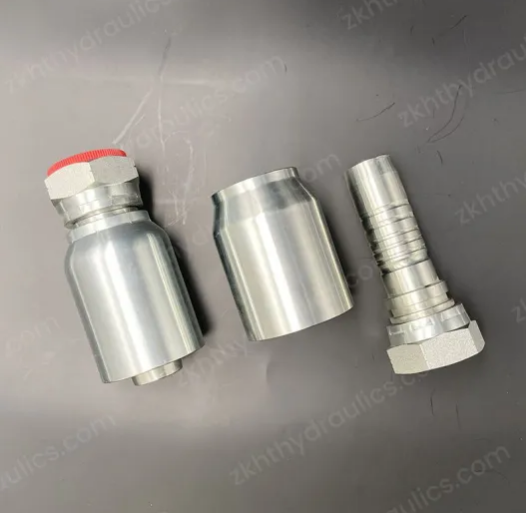Hose Fittings Selection Guide: Types, Features, Applications
Hose Fittings Information
Hose fittings are essential components that connect sections of hose to other hoses, equipment, or system components. Typically, systems use straight hose runs connected by these fittings or specially designed connections and joints.
Hoses vs. Tubes and Pipes
In industrial contexts, the terms "tube" and "pipe" refer to rigid, hollow cylinders made from a single solid material. These terms are often used interchangeably. In contrast, "hose" is generally more flexible and portable. Hoses are constructed from multiple layers of different materials tailored to their specific application and the type of media they transport.
Hose lengths usually feature integral connectors and fitting ends that are attached, often permanently, during manufacturing. On the other hand, tubing and piping typically require separate fittings that are applied during installation or assembly.
Applications
The choice of hose fittings is highly dependent on the specific application, and consulting with a fitting supplier can help optimize selection. Broadly, hose fittings are categorized based on their use in either hydraulic or pneumatic systems.
- Hydraulic Applications: These involve the transfer of liquid fluids, such as water, oils, and various chemical solvents. Hydraulic fittings need robust seals to prevent fluid leakage and must often be resistant to rust or chemical corrosion due to the nature of the fluids they carry.
- Pneumatic Applications: These involve the transfer of gases. Pneumatic fittings require exceptionally tight seals to prevent gas leakage and must also resist chemical corrosion.
Types of Fittings
Hose fittings vary based on their connection type and the function they serve.
Connection
Fittings attach to tubes through various connection methods, each offering unique advantages.
- Ball and Sleeve Fittings: These connect an outer sleeve to an inner ball fitting. The sleeve retracts to enable connection and disconnection of the ends. Some serve as push-to-connect fittings, ideal for applications needing frequent hose reconnection and disconnection.
- Barbed Fittings: These use a barbed tube with a tapered end and ridges that insert into the hose. They are most suitable for low-pressure applications due to their weaker sealing capability.
- Cam-Lock Fittings: These connect using fold-down tabs that lock into place after insertion. They are common in heavy-duty uses like fire hoses and sludge or sewage pumping.
- Crimp Fittings: These involve placing the hose over a tubular end and securing it with a sleeve or crimp socket. Making these connections usually requires crimping tools.
- Compression Fittings: These compression fittings connect two hoses by compressing them with a compression nut and ferrule. While typically used for tubing and piping, they can also join two hose sections or connect a hose to a tube.
- Flare Fittings: These are a type of compression fitting featuring a tapered or coned end. Installation requires special flaring tools to fit the hose inside the flared end, creating a deep seal. These fittings are ideal for high-pressure applications and offer greater pressure handling and versatility compared to standard compression fittings.
- End fittings provide specific surfaces for making hose connections:
Clamp ends are fittings which allow hose to be clamped to the connection.
Plain ends are fittings which allow hose to be connected by adhesive, solder, or other forms.
- Flange fittings feature ports with flush surfaces perpendicular to the hose. These surfaces are connected and sealed using clamps, bolts, or welding. Unlike separate pipe and tube flanges, hose flange connections are often integrated into the design. For detailed information on industrial flanges, refer to the Pipe Flanges Selection Guide on IEEE GlobalSpec.
- Threaded fittings have built-in grooves, or screw threads, on their inner (female) or outer (male) surfaces, allowing them to connect with matching threads.
Straight Threads: These provide a straightforward connection but do not inherently create a seal.
Tapered Threads: Designed to form a tight seal, these threads are suitable for containing gases or fluids under pressure. Seal reliability can be enhanced by applying a coating or Teflon tape.
Dry Fit Threads: These precise threads seal without additional sealants, crucial for applications where extra sealants could cause contamination or corrosion.

评论
发表评论